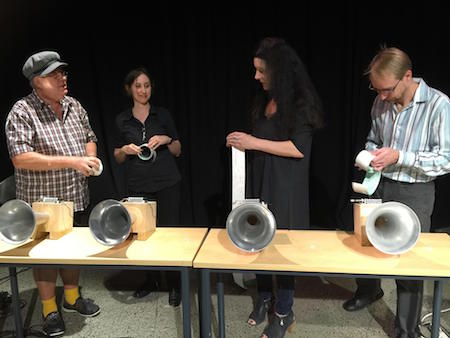The ‘Under the Icecap‘ art and science collaboration aims to illuminate the fundamental connection between human activities and planetary dynamics, by creating an experimental installation and performance series that will visualise and sonify scientific and statistical datasets. In essence Under the IceCap renders complex environmental bio-logging data-sets collected by Southern Elephant Seals on their under-ice dives and open ocean transits with economic and climatic data, combining them to form 4D cartographic animations, sonifications and live performative and sculptural forms.
The byeline for the Institute of Marine and Antarctic Studies is Turning Nature into Knowledge. The Under the IceCap project supplies a second line Turning Knowledge into Culture encapsulating a powerful Art and Science synthesis and simultaneously raising the expectation but also the risk of the endeavour.

In performance at the Australasian Computer Music Conference 2015, UTS, Sydney.
The complex bio- logging data collected by Southern Elephant Seals on their dives in the Antarctic (and collated as Surface Wind Speed, Depth with Salinity, Depth with Temperature and Ocean Bottom with Bottom Density) are transcribed onto the punch paper music-box system. This a crude but effective Digital to Analogue sonification of data values. This simple prototype illustrates the potential to render tens of simultaneous data streams onto a pianola or disc-klavier for ‘live’ performance.
The primary aim is to produce creative work which is compelling and affective but is at the same time a work of scientific utility tapping into both sides of the brain! The key focus is the relationship of the environmental knowledge generated from Antarctic bio-logging data with the Anthropogenic changes in the biosphere. For ACMC bio-logging data has been transcribed using a punch tape system on a series of multi-note range music boxes as a short live performance.
Here is a recent recording of the work.
You can find my paper A Different Engine in the full proceedings of the ACMC2015 conference.